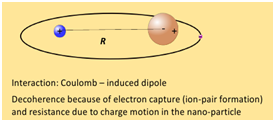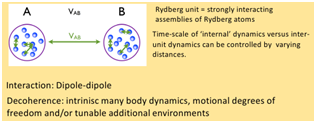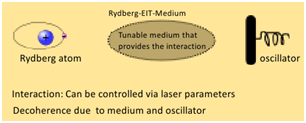Interacting Rydberg atoms interfaced: Coherence and entanglement
Summary
Coherence and entanglement are fundamental properties of quantum systems which are gradually lost through coupling to the environment. Investigations how to spatially transport entanglement and how to protect coherence have attracted considerable interest, particularly in quantum information processing where the read-in and read-out steps enforce to interface the entangled quantum system with an environment leading inevitably to decoherence. On the other hand, systematic studies how interfacing a finite quantum system with another one (or with a classical system) dynamically changes its coherence properties are scarce. A reason may be the difficulty to find experimental test systems that allow tuning these coherence properties. Ultracold Rydberg gases, “superatoms” and aggregates can be designed to have a well defined degree of coherence and thus alleviate this situation.It is the aim of this project to show that their spatial (micrometer) and temporal (microsecond) scale allows one to interface these Rydberg-quantum-systems in a controlled way with an environment, such that the resulting change of coherence and entanglement properties can be monitored with relative ease. Thus, in contrast to many prior setups, we expect to be able to extract and understand the relevant mechanisms of loss of coherence and entanglement. Based on this knowledge, we envisage to construct interfaced Rydberg systems geared at reducing or accelerating decoherence.
In particular we will investigate a Rydberg unit interfacing ...
... a nano-particle

... an other Rydberg unit


Principal Investigators
Alexander Eisfeld, Max-Planck-Institut für Physik komplexer SystemeJan-Michael Rost, Max-Planck-Institut für Physik komplexer Systeme
Back to all GiRyd projects
